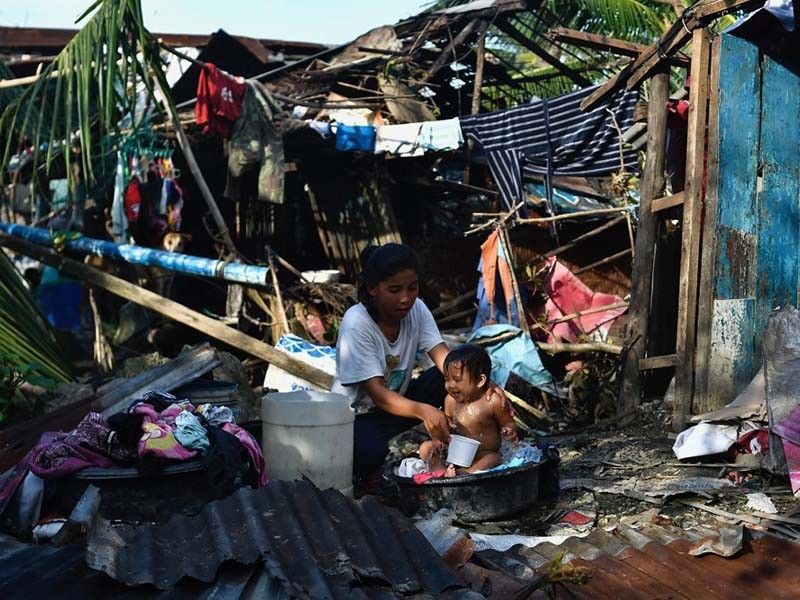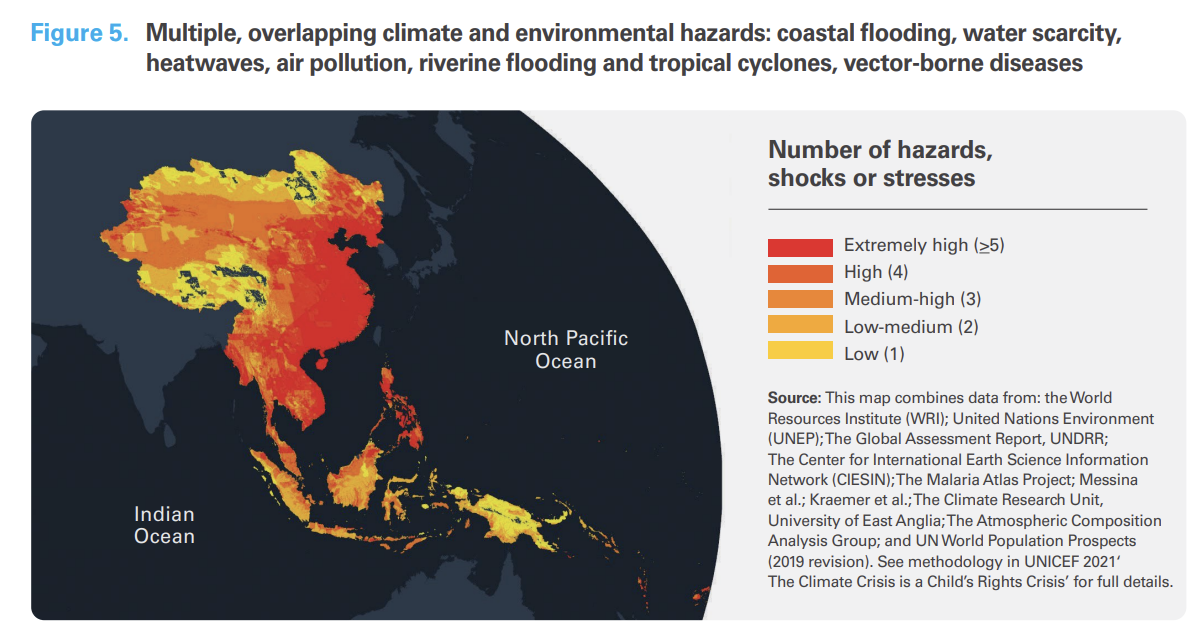UNICEF: Filipino children among most at risk from 'overlapping' climate hazards

MANILA, Philippines — The Philippines is among the world’s most dangerous countries in the world for children in terms of exposure to multiple types of overlapping climate and environmental shocks and stresses, according to the latest UNICEF East Asia and Pacific report, ‘Over the Tipping Point.’
At least 96% of children in the Philippines face more than three different types of “overlapping” climate-related hazards or stresses, much higher than the global average of 73% and the regional average of 89%.
This means that at least nine out of ten Filipino children are at risk of experiencing several types of climate shocks like coastal flooding, water scarcity, heatwaves, air pollution, tropical cyclones or vector-borne diseases.
With climate shocks increasing in frequency, the effects of these hazards may be more amplified among children who are already vulnerable to begin with due to non-climate shocks like the COVID pandemic and the cost-of-living crisis, among others, according to UNICEF.
This leads to a “polycrisis” — “a situation with multiple near-simultaneous shocks with strong interdependencies,” UNICEF stated in its report, which sought to measure the compounding effects of several environmental shocks in the East Acia and Pacific Region.
“Other human-driven trends amplify these effects, leading to more shocks, thus creating knock-on effects on several interconnected systems and sectors,” UNICEF added.
Based on data from several climate- and environment-related research institutions, the Philippines has an "extremely high" (more than five) number of hazards, shocks or stresses.

Recurring climate hazards
Climate hazards striking the country simultaneously could also be “eroding” people's capacity to mitigate its effects, the report stated.
“The recurrent climate hazards, shocks and stresses do not have isolated impacts — they have cascading effects on a host of other risks. Droughts, floods and severe weather, coupled with other environmental stresses, compound one another,” the UNICEF study noted.
As climate hazards occur more frequently, the likelihood that climate shocks will take place in closer succession could also increase — a pain point in countries like the Philippines where typhoons have become more severe in recent years.
UNICEF cited as an example Typhoon Pepeng (Parma), which hit the Philippines in 2009 and was “accompanied with another associated hazard — floods, which killed nearly 512 people and caused economic losses of US$798 million.”
This was immediately followed by Typhoon Ondoy (Ketsana), which hit the country during the same year, “causing torrential rainfall and further flooding, compounding the damage caused by Parma,” UNICEF stated.
“Aside from killing an additional 500 people, there were economic losses of $323 million, creating a multiplier effect that exacerbated the impacts of each hazard,” the UNICEF report stated.
Climate hazards can also lead to “secondary multiplier effects” when they impact those with different vulnerabilities in social, economic, human and ecological systems that are interconnected.
Floods increase the risk of water-related infectious diseases due to contamination, and floods and cyclones increase the risk of malaria and dengue due to the appearance of more mosquito breeding sites.
East Asia and Pacific region most impacted by overlapping hazards
“More than any other region, children in the East Asia and Pacific region are having to survive multiple, often overlapping climate and environmental hazards and shocks,” according to UNICEF.
Children in the region today face at least a six-fold increase in climate-related disasters compared to their grandparents.
For the last five decades, countries in the East Asia and Pacific region have also witnessed 11 times more floods; 4 times more storms; 2.4 times more droughts and 5 times more landslides, the report found.
“With temperatures and sea levels rising and extreme weather such as typhoons, severe floods, landslides and droughts increasing, millions of children are at risk,” the report stated.
UNICEF laid down recommendations to better protect children from the effects of overlapping climate stresses. Among others, it stressed the need to provide children with continued access to the services they need, which will require investments in “climate-smart and disaster-resilient education, health, and water, sanitation and hygiene services.”
UNICEF also called on countries to provide robust child protection and social protection systems that are “climate-responsive” and the use of strong early warning, risk management and disaster preparedness systems.
- Latest
- Trending





























